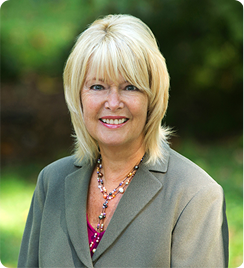
On a beautiful Sunday afternoon we kayaked from the Pentagon to Georgetwon, sharing the Potomac River with various water enthusiasts. The views were breathtaking and the exercise devine. Paddling farther than ever before, I began to think about the way back. Would it be possible to take a different route? One that was shorter, easier, quicker?
So I proposed that we leave the river and enter a creek that was a parallel shortcut to our launch site. We’d gone this way before and it was peaceful, solitary, and filled with birds and turtles. It seemed like the perfect plan.
However after a short distance, the creek became filled with green, seaweed-type plants. Was this hydrilla that had spread since our last visit? Once we had taken this route and the low tide required us to portage. This time we had sufficient water, but the vegetation stopped our boats cold. We were about halfway in and couldn’t see our destination yet. “Perhaps it will get better,” I thought. “I’d hate to turn around and go back.” So we stroked very hard, trying to rid our paddles of the accumulating green plants that hung on everything.
If we stopped, we stayed stuck. It reminded me of stories about quicksand disasters…no way out. We tried to make paths for each other. The first one clearing a way for the second. All the while I’m thinking, “this really wasn’t a smart move, Candy. Why did you think you could cut corners and make it back easier and faster?”
Once home safely with aching arms, I began to see the parallels with decisions we make in life. And especially with times when we want to change our work. Perhaps we yearn to join a new, more evolved company or more radically, we envision switching to a completely new career. Once we decide to make the change, we want it to happen fast. And even easy would be great.
So we search for the shortcuts. Veronica is a counselor who works with homeless families. She loves helping her clients, but the work is often challenging and the resources are scarce. As Veronica ages, she would like shorter hours and easier work. The field of Life Coaching is making news these days. Veronica doesn’t know much about it, but some of her colleagues are talking about a switch.
Veronica attends a workshop on coaching and is intrigued. She would love to work with people who have sufficient resources to create desired changes in their lives. Veronica signs up for a coach training course and starts to plan her job exit. Veronica is thinking that with her background and this training, she’ll have a coaching practice up in less than one year.
Many people are attracted to changing their field of work. However, they are reluctant to spend time and money on a new degree or certification and training. They worry they are too old to spend a long time “starting over”. They want the destination, but hope to avoid the journey. These obstacles can result in remaining in a dissatisfying work environment or jumping into something new with little preparation or thought.
Avoiding what you view as a challenge can bring greater impediments. Without proper information and planning, Veronica may have unrealistic expectations of her proposed career as a coach. One way to get the inside facts is to interview people who are doing work you admire. It’s important to get current information on the trends, opportunities, salaries, skills needed, demand, and competition.
What if I had asked someone about the current conditions in the creek? If I had known the path was overgrown and had compared the effort required with that of the river route, I would have had greater knowledge to make an informed decision. Instead, I impulsively tried the “easy” option. Sometimes what’s best for you isn’t the quickest or the easiest. Sometimes the harder path takes you to where you really want to go.
“It shouldn’t be easy to be amazing. Then everything would be. It’s the things you fight for and struggle with before earning that have the greatest worth. When something’s difficult to come by, you’ll do that much more to make sure it’s even harder-or impossible-to lose”
Sarah Dessen
Design your route:
Determine your end goal
Interview role models
Identify the steps needed
Examine the cost/benefits
Begin or re-work your plan
Full speed ahead and see you on the path!






